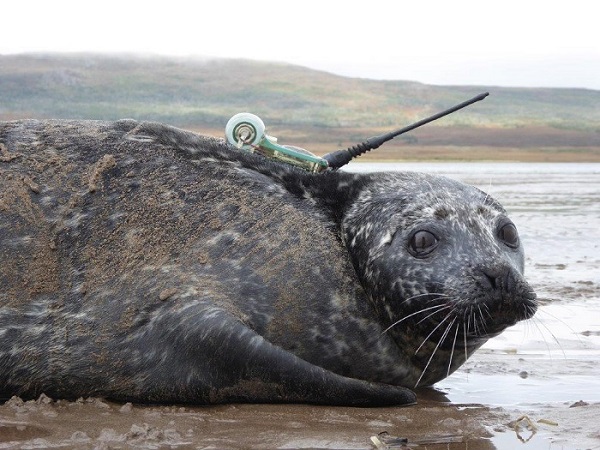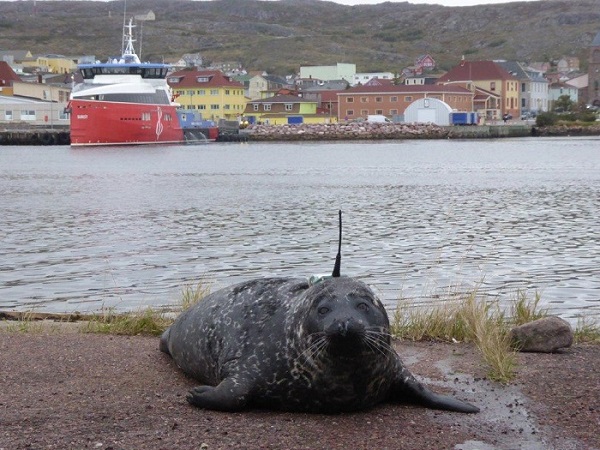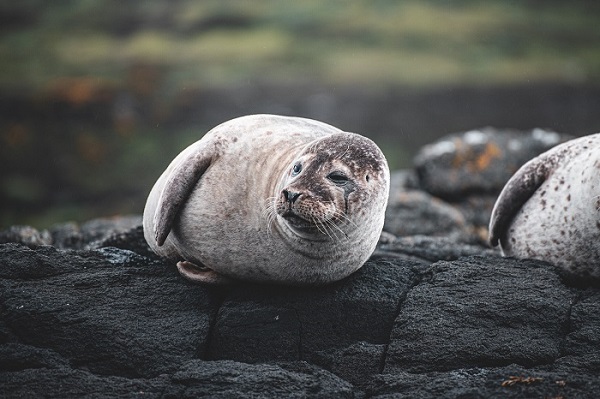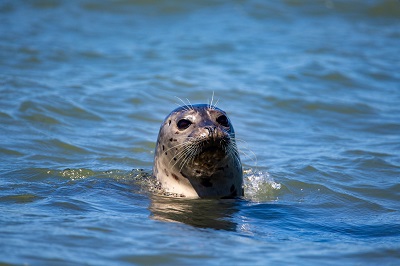← Back
Seals tracked by Argos prove great migrators

Did you know that seals are able to learn the melody of the Star Wars theme? Or that scientific studies based on Argos tracking data have confirmed they are great migrators? The grey seal, long hunted for its fur, still holds lots of surprises. We met Cécile Vincent, a lecturer and research scientist at La Rochelle University at the Chizé biological research centre (CEBC), who tells us all or almost all there is to know about this endearing species and the discoveries it has enabled scientists to make from space, thanks in particular to data from the Argos satellite system transmitted by CLS.
Seals capable of singing the theme to Star Wars
Like some birds, seals are animals known for their vocal abilities.
The grey seal, a species found notably on the French coast, is said to be capable of reproducing human sounds and melodies. Researchers at the University of St Andrews in Scotland have even managed to teach it the melody of the famous Star Wars film and some sequences from the lullaby Twinkle, Twinkle Little Star, during a scientific study.
What’s the point of such learning?
Understanding how vocal skills are influenced by genetics and learning and how ultimately this information can help us develop new methods to study language disorders.
So we have a lot to learn from this species and every reason to track, study and understand it to ensure better protection and conservation.
French experts to the fore
Cécile Vincent, a French researcher at the Chizé biological research centre (CEBC, a CNRS/La Rochelle University Joint Research Unit), is one of France’s leading experts on seals. She has been studying this endearing species for more than 20 years. Her theatres of operation are St Pierre et Miquelon and the French mainland coasts. What sets her apart, in addition to two decades of observation and research, is that she conducts research on grey seals and common seals from space. She has tagged more than 20 of these marine mammals with Argos satellite transmitters in recent years.
She agreed to answer our questions and shed light on the status of grey and common seal populations.
Seals rebounding atfer long being hunted for their fur
The grey seal and common seal are now classified on the IUCN scale as protected species of “minor concern”, even though common seals are more fragile. This is good news, the result of effective conservation measures. Today, both species are even growing in number. But this was not always the case. For a long time, the popularity of seal fur in the European fashion industry drove intensive seal hunting and the collapse of populations. As a result of opposition to organized hunting, laws evolved and hunting was regulated to ensure the sustainability of the species.
However, it should be noted that populations have still not returned to their 19th-century levels.
What are the threats to these species today?
The main pressures on grey and common seals are all linked to human activity: interaction with fisheries, but also disturbance on dry resting places, water pollution, noise disturbance of the marine environment caused by shipping traffic and offshore activities (oil rigs, wind farms), etc.
Seals under close watch
To better understand and protect these species, the scientific community is getting organized and marine mammal monitoring programmes are being set up through telemetry tracking campaigns in the main colonies of grey seals (Halichoerus grypus) and common seals (Phoca vitulina).
Why these Argos tracking surveys?
The objectives of these Argos survey campaigns are to track the animals’ movements, see how colonies are interconnected, particularly in their feeding areas, and obtain samples to study their ecological niche and their possible contamination by pollutants.
How do you tag a seal with an Argos transmitter?
Fitting an Argos transmitter is no easy task. It’s a four-step process, and each step is complex and vital for effective tracking.
- STEP 1 : Watch for the right moment to catch the seal: when it leaves the beach to go into the water.
- STEP 2 : Capture the animal with a suitable net. These straight nets are made of an animal-friendly material, specially designed not to cut them. You can also use a “butterfly” net, a kind of large sock that can hold the seal in its entirety.
- STEP 3 : Anaesthetize the animal. This is a strategic step to limit its stress and to place the tag correctly and smoothly, and to take all the necessary samples and measurements without any risk of the researchers being bitten.
- STEP 4 : Stick the tag to the neck so it won’t get in the animal’s way when it’s resting or hunting.

More info about marine animals tracking
Packed with technology

These Argos transmitters are packed with technology and often the only way to study these species once they have left the beach.
A transmitter never exceeds 3% of the animal’s weight. For tracking seals, they weigh about 380 grams, their battery can last a year, but tracking usually lasts 8 months. When the animal moults, the transmitter just drops off. Each transmitter carries diving, temperature and humidity sensors, an accelerometer, a GPS chip, and an Argos transmitter. Throughout the transmitter’s life, it records all these parameters and uplinks them to the Argos satellite constellation. CLS then transmits this information to scientists for their studies and behavioural analyses.

What has been discovered thank to Argos tracking?
The main discovery is that common seals were thought to be sedentary; well that was wrong! They can swim between 100 and 200 kilometres, which makes them great travellers and in terms of population dynamics they are specimens for which conservation measures must be adapted accordingly to cover their entire territory. But many questions remain: How do they find their way around? Are their migration paths genetically transmitted? Do they learn from one another within colonies? Why are they found in the regions observed with Argos? These are all questions that will require many more years of study, which is what so fascinates Cécile Vincent who we thank for sharing her knowledge with us.





